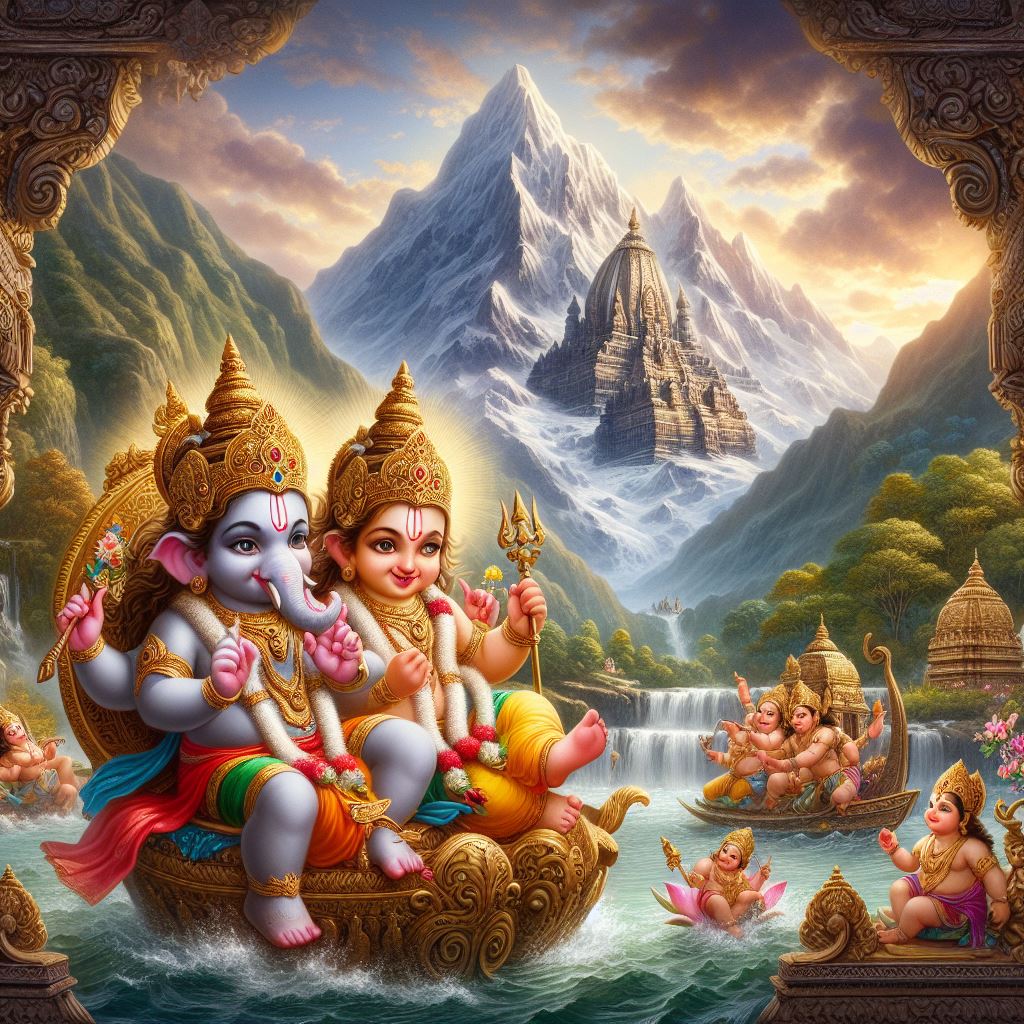Who is Elder between Gaṇeśa and Kārtikeya?
The beauty of Hinduism lies in its diversity. However, with that we get questions also about the differences in practices as well as beliefs. We need to carefully reconcile the differences. Here we’ll discuss one such pertinent question about Hindu Gods viz. Gaṇeśa and Kārtikeya.
This question of ‘Who is elder between Gaṇeśa and Kārtikeya?’ has been perplexing the Hindus of India for ages. In the North Indian states Kārtikeya is held as the first born son of Lord Maheśvara and mother Pārvatī. On the other hand, in the extreme Southern parts of the country especially in the Tamil Nadu, Lord Gaṇeśa is held as the older one.
Which side of the country is correct? Both are right in their beliefs as we have evidences for both versions. We may think that both versions at the same time cannot be equally correct, but the pleasant news is, both the stories are correct at the same time. Let’s explore and understand how!
Unlike we mortals whose life stories and births are linear and forward moving, in the case of Gods, there are no fixed paths. Lord Maheśvara manifested from Brahmā, Brahmā manifested from the Lotus of Viṣṇu’s navel and Viṣṇu in turn originated from the left side of Maheśvara. So, technically, Maheśvara is the great grandfather as well as great grandson of himself at the same time.
On similar lines, Gaṇeśa and Kārtikeya are equally the elder brother to the other based on two different manners of their manifestations.
As per the ‘Śiva Purāṇa‘ we know that Lord Śiva and mother Pārvatī got married and produced their first child as Kārtikeya and afterwards Gaṇeśa was created. So, by the authority of ‘Śiva Purāṇa’, it is correct to consider Kārtikeya as the elder brother of Gaṇeśa.
However, there is also another fact that it was not the first time when Gaṇeśa manifested. Beyond the universe Śiva and Pārvatī exists as Sadāśiva also known as Kāmeśvara and Lalitā. As described in the ‘Brahmāṇḍa Purāṇa‘, during the cosmic battle with demon Bhaṇḍāsura, when his brother had created a machine of obstruction, Lalitā and Kāmeśvara look at each other and from the union of their glances manifests the primordial Gaṇeśa named Mahāgaṇapati. The ‘Brahmāṇḍa Purāṇa‘ says, “kāmeśvara mukhāloka kalpita śrī gaṇeśvara“, meaning, “By mere glance at the face of Kāmeśvara, Lalitā had created Gaṇeśa”. That was the time way before Śiva and Pārvatī’s marriage.
After the battle with Bhaṇḍāsura gets over, that Gaṇapati vanishes. It was he again who was recreated by mother Pārvatī and this time he stayed in that form permanantly with his parents.
In this remanifestation, he was born after Skanda hence he was the younger brother. But since he had already manifested before, he was the elder brother to Skanda, hence he has a name ‘Skandapūrvaja‘ meaning, ‘One who was born before Skanda’.
Therefore, Gaṇeśa and Kārtikeya are elder than each other at the same time depending upon what frame of timeline we fix as our reference point. If Śiva and Pārvatī’s marriage is the frame of reference, then Kārtikeya becomes the elder brother and if Bhaṇḍāsura battle time-frame is taken as the point of reference, Gaṇeśa becomes the elder brother.
Thus, both versions of truths are correct. In South India, one truth is adopted for their devotion, whereas the North India took the other truth for their standard. In truth both beliefs are attested by the scriptures.
May those divine and eternal siblings inspire our minds with intellect, clarity of thought, wisdom, and brotherhood!
FAQ-s
This article addresses the below FAQ-s:
- Is Ganesha older than Kartikeya?
- Who was born first Ganesh or Kartik?
- Who is the first child of Shiva?
- Is Lord Ganesha the younger or older brother of Kartikeya?
- Who is elder between Ganesha and Kartikeya?



